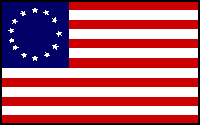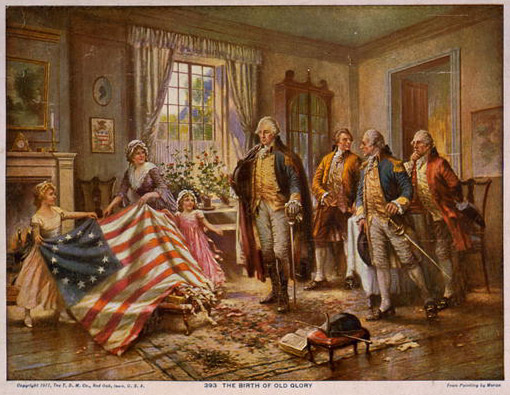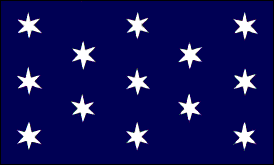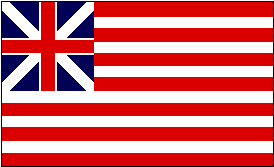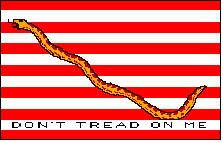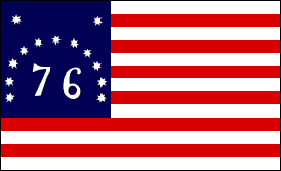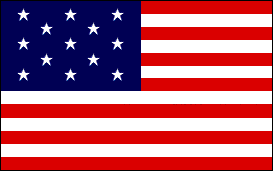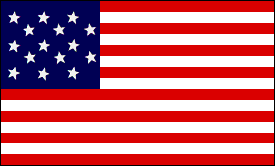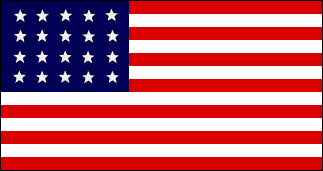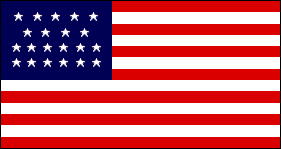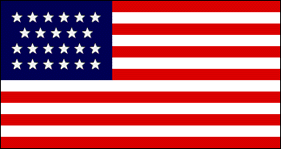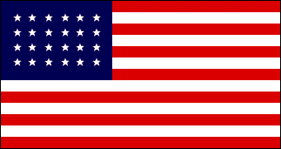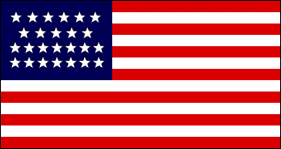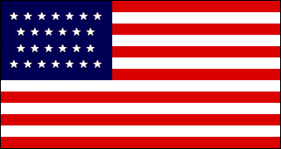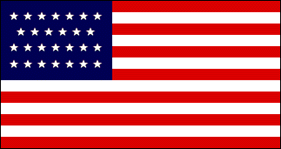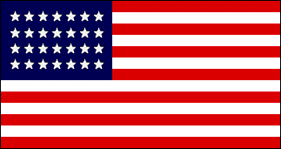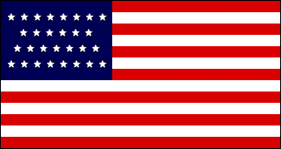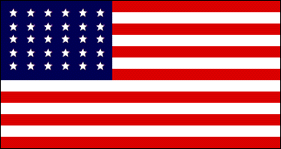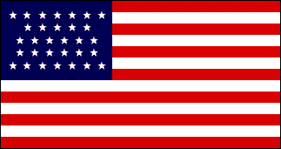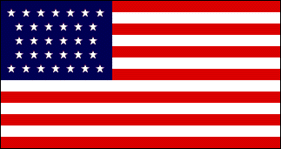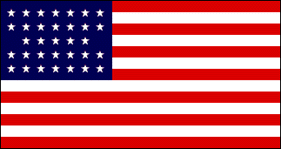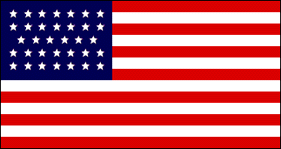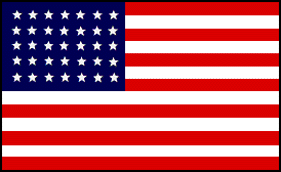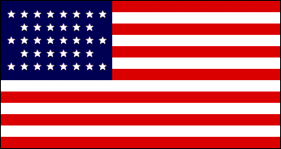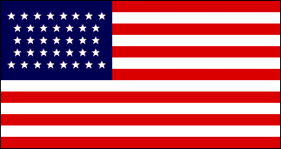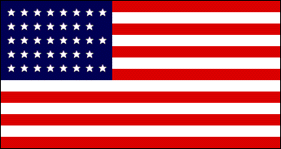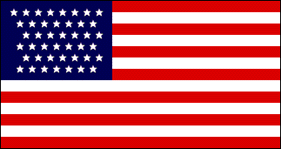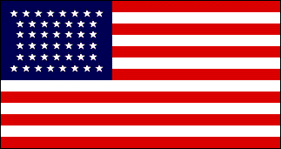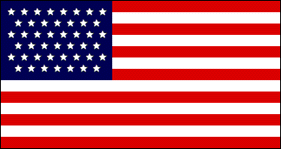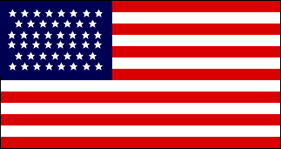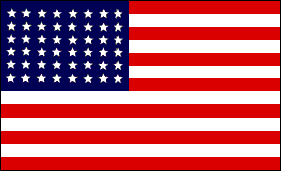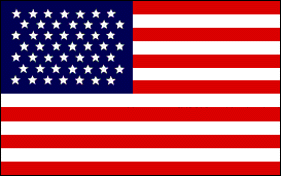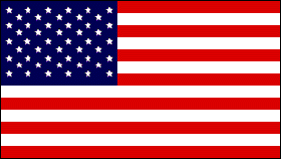
|
||||||||||||
|
|
|
The United States Of America Flag In the United States, Flag Day is celebrated on June 14. It commemorates the adoption of the flag of the United States, which happened that day by resolution of the Second Continental Congress in 1777. The June 14 date is also when Congress adopted "the American continental army" after reaching a consensus position in the Committee of the Whole. Since 1916, when President Woodrow Wilson issued a presidential proclamation establishing a national Flag Day on June 14, Americans have commemorated the adoption of the Stars and Stripes by celebrating June 14 as Flag Day. Prior to 1916, many localities and a few states had been celebrating the day for years. Congressional legislation designating that date as the national Flag Day was signed into law by President Harry Truman in 1949; the legislation also called upon the president to issue a flag day proclamation every year. Until the Executive Order of June 24, 1912, neither the order of the stars nor the proportions of the flag was prescribed. Consequently, flags dating before this period sometimes show unusual arrangements of the stars and odd proportions, these features being left to the discretion of the flag maker. In general, however, straight rows of stars and proportions similar to those later adopted officially were used. The principal acts affecting the flag of the United States are the following:
The Flag of
the United States
The Betsy Ross Flag While no one knows the exact origin of the first American flag, some historians believe it was designed by Congressman Francis Hopkinson and sewn by Philadelphia seamstress Betsy Ross.
Betsy Ross showing the United States flag to George Washington and others CREDIT: Ferris, Jean Louis Gerome. "Making the flag." Detroit Publishing Company between 1900 and 1920. Touring Turn-of-the-Century America: Photographs from the Detroit Publishing Company, 1880-1920, Library of Congress.
The rattlesnake was the favorite animal emblem of the Americans even before the Revolution. In 1751 Benjamin Franklin's Pennsylvania Gazette carried a bitter article protesting the British practice of sending convicts to America. The author suggested tht the colonists return the favor by shipping "a cargo of rattlesnakes, which could be distributed in St. James Park, Spring Garden, and other places of pleasure, and particularly in the noblemen's gardens." Three years later the same paper printed the picture (as seen above) of a snake as a commentary on the Albany Congress. To remind the delegates of the danger of disunity, the serpent was shown cut to pieces. Each segment is marked with the name of a colony, and the motto "Join or Die" below. Other newspapers took up the snake theme. By 1774 the segments of the snake had grown together, and the motto had been changed to read: "United Now Alive and Free Firm on this Basis Liberty Shall Stand and Thus Supported Ever Bless Our Land Till Time Becomes Eternity" Other authors felt the
rattlesnake was a good example of America's virtues. They argued that it is
unique to America; individually its rattles produce no sound, but united they
can be heard by all; and while it does not attack unless provoked, it is deadly
to step upon one. This was the personal flag of the
Commander-In-Chief during the Revolutionary War. A reproduction of this flag
flies today at Washington's Headquarters, Valley Forge. Also known as the Continental
flag, it is the first true U.S. Flag. It combined the British King's Colours and
the thirteen stripes signifying Colonial unity. George Washington liked this
design so well that he chose it to be flown to celebrate the formation of the
Continental Army on New Years Day, 1776. On that day the Grand Union Flag was
proudly raised on Prospect Hill in Somerville, near his headquarters at
Cambridge, Massachusetts.
The American Revolutionary period was a time of intense but controlled individualism - when self-directing responsible individuals again and again decided for themselves what they should do, and did it- without needing anyone else to give them an assignment or supervise them in carrying it out. Such a person was the patriot Colonel Christopher Gadsden of South Carolina. He had seen and liked a bright yellow banner with a hissing, coiled rattlesnake rising up in the center, and beneath the serpent the same words that appeared on the Striped Rattlesnake Flag - Don't Tread On Me. Colonel Gadsden made a copy of this flag and submitted the design to the Provincial Congress in South Carolina. Commodore Esek Hopkins, commander of the new Continental fleet, carried a similar flag in February, 1776, when his ships put to sea for the first time. Hopkins captured large stores of
British cannon and military supplies in the Bahamas. His cruise marked the
salt-water baptism of the American Navy, and it saw the first landing of the
Corps of Marines, on whose drums the Gadsden symbol was painted. One of the first flags flown by our Navy may have been an adaptation of the "Rebellious Stripes" created at the time of the Stamp Act Congress. It featured thirteen red and white stripes. Stretched across them was the rippling form of a rattlesnake, and the words, "DON'T TREAD ON ME"- a striking indication of the colonists' courage and fierce desire for independence. The flag we know today as the
first Navy Jack (sometimes known as the "Culpepper Flag) is believed to have
flown aboard the Alfred, flagship of the newly commissioned Continental
fleet, in January, 1776. American ships used this flag, or one of its
variations, throughout the Revolutionary War. Used in the Battle of Bennington, August
16, 1777, by Vermont militia. This flag is the first to lead American armed
forces on land. The original is preserved in the museum at Bennington, Vermont. The Continental Congress adopts the following: Resolved: that the flag of the United States be thirteen stripes, alternate red and white; that the union be thirteen stars, white in a blue field, representing a new constellation. (stars represent Delaware, Pennsylvania, New Jersey, Georgia, Connecticut, Massachusetts, Maryland, South Carolina, New Hampshire, Virginia, New York, North Carolina, and Rhode Island) On May 30, 1916, President Woodrow Wilson issued a presidential proclamation declaring that June 14 be celebrated as the official Flag Day. Many Americans celebrate Flag Day by displaying the Red, White and Blue in front of homes and businesses. The day commemorates the adoption of the Stars and Stripes as the official flag of the United States.]
Today's American Flag-13 equal horizontal stripes of red (top and bottom) alternating with white; there is a blue rectangle in the upper hoist-side corner bearing 50 small, white, five-pointed stars arranged in nine offset horizontal rows of six stars (top and bottom) alternating with rows of five stars; the 50 stars represent the 50 states, the 13 stripes represent the 13 original colonies; known as Old Glory the design and colors have been the basis for a number of other flags, including Chile, Liberia, Malaysia, and Puerto Rico The Pledge of AllegianceI Pledge Allegiance to the flag of the United States of America and to the Republic for which it stands, one Nation under God, indivisible, with liberty and justice for all
|
